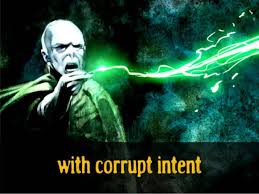Focus on the Issue of “Corrupt Intent”
 Legal and compliance practitioners are often asked to review a set of facts and determine whether the actors will potentially violate the FCPA. A lot has been written on the vagueness or lack of clarity surrounding the FCPA. Those opinions are not very persuasive and ignore common sense, legal concepts and good faith.
Legal and compliance practitioners are often asked to review a set of facts and determine whether the actors will potentially violate the FCPA. A lot has been written on the vagueness or lack of clarity surrounding the FCPA. Those opinions are not very persuasive and ignore common sense, legal concepts and good faith.
A legal and compliance professional knows the importance of good faith. They also know what a good faith legal analysis looks like and what a bad faith (or rationalization) looks like. Drawing the lines around FCPA behavior is not as hard as many claim. Those that make such baseless claims are only justifying their own existence or engaging in a transparent marketing ploy.
My point is not that all FCPA issues are easy. To the contrary, some can be complex and take time to figure out. However, most can be solved with good faith reviews and analyses.
One key issue that I always harp on – I know, I admit it – is “corrupt intent.” There are a lot of words that surround intent, especially in the white collar world. In many cases, an actor’s liability for a white collar crime does not turn on whether he or she committed an act, but boils down to what was the actor thinking at the time, or what was the actor’s intent.
Given the fact that none of us are adept at mind reading, we always look to words, context and surrounding circumstances to infer what was going on in an actor’s head.
In the FCPA situation, the requisite intent for an actor is “corrupt intent. Here a simple explanation of this concept is very helpful. If the actor transfers money or something else of value to a foreign government official to influence, persuade or convince a foreign government official to commit an act in violation of that government’s official’s duties or obligations, wallah – we are looking at corrupt intent. (I know I have omitted the business purpose test but assume that we satisfy that with the respective action or omission by the foreign official).
A legal or compliance officer tasked with considering a prospective action by a company actor has to examine, in good faith, the presence or absence of corrupt intent, and carefully weight how such conduct in the specific context would be viewed by a regulator or prosecutor.
As part of this analysis, a legal and compliance officer knows that creating a contemporaneous document reflecting a good faith analysis of the issue, and why the officer was comfortable with moving forward with the conduct is a sure and reliable way to document the company’s intent. Of course, there are many assumptions and variables – I am assuming that the legal and compliance officer has obtained all of the relevant information from the business. As we saw last year in the VimpelCom enforcement action, lawyers and compliance officers were not able to conduct a good faith analysis because senior executives conspired to withhold such information from them.
 The “corrupt intent” framework can help to solve what would be otherwise intractable issues. It is an effective strategy to separate the wheat from the chaff when reviewing an FCPA issue. It is not meant to be the surefire solution but it is a helpful way to focus analysis and consider the issues.
The “corrupt intent” framework can help to solve what would be otherwise intractable issues. It is an effective strategy to separate the wheat from the chaff when reviewing an FCPA issue. It is not meant to be the surefire solution but it is a helpful way to focus analysis and consider the issues.
Legal and compliance practitioners should always ask themselves how would a prosecutor view a piece of evidence or a course of conduct. It is too easy to just write off this way of thinking as aggressive DOJ attorneys will always find a way to make something look wrong. That is a cop out. In fact, DOJ FCPA attorneys, in my experience, carefully consider issues, and are willing to engage in a thoughtful discussion and analysis.
















2 Responses
[…] Read Full Article: Focus on the Issue of “Corrupt Intent” – Corruption, Crime & Compliance […]
[…] Read Full Article: Focus on the Issue of “Corrupt Intent” – Corruption, Crime & Compliance […]